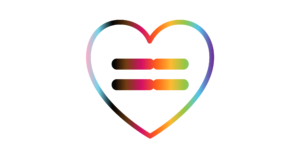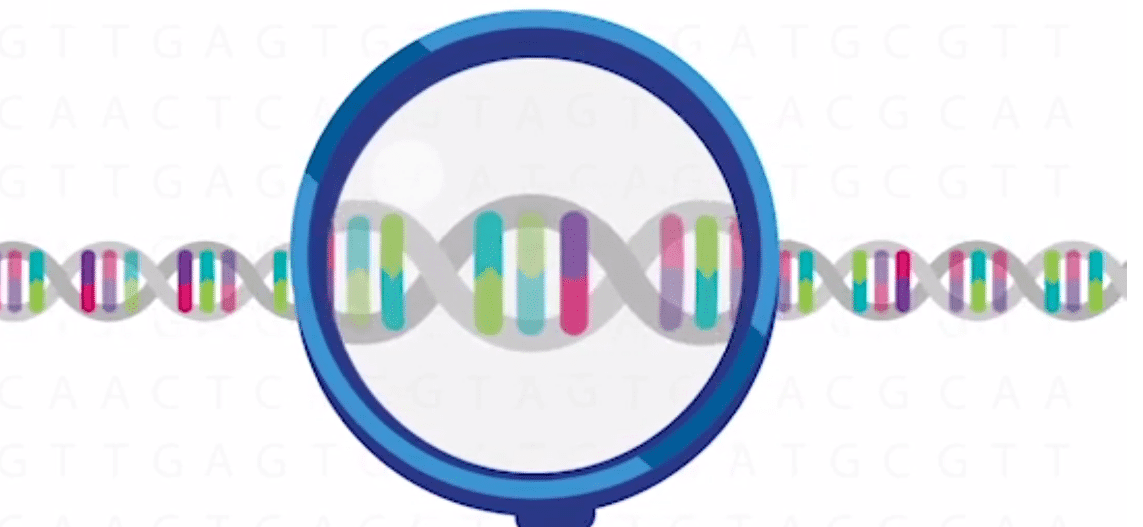By Jey McCreight Ph.D., Science Communication Senior Program Manager at 23andMe

Pride month is a time to celebrate the love that’s in all our DNA, regardless of someone’s sexual orientation or gender identity. But even though we are all 99.5 percent genetically identical, we still aren’t treated 100 percent equally.
Here at 23andMe, we’re constantly thinking about how we can make our product, research, and workplace more equitable for everyone, including the LGBTQ+ community.
In Product
First, our Product team is actively looking into how we can improve the experience for transgender and non-binary customers. For example, the team is working to separate the concepts of biological sex from gender identity. This will not only be more scientifically accurate but will also provide a better experience for our transgender and non-binary customers.
What is sex?
A person’s biological sex is usually classified at birth based on their external genitalia. However, a person’s sex is not just determined by their external anatomy. It is also determined by chromosomes, hormones, internal reproductive organs, and secondary sex characteristics.
Many people think that sex is binary, but it is often not that simple. At least one in 1,500 births are intersex, meaning that a person’s anatomy and/or their chromosomes can’t be classified as typically male or female.[1] This is a conservative estimate, as many people do not realize they are intersex until later in life. Some never find out. How society defines “male,” “female,” and “intersex” is heavily driven by culture and social norms of the day, and not simply by biological traits.
Even chromosomal sex is not binary. While most women have two X chromosomes and most men have an X and a Y, this is not always the case. People can have a single X chromosome, three X chromosomes, two Xs and one Y, and a whole suite of other possibilities.[2] Some women are XY but have a broken or deleted copy of the SRY gene, which is key for developing into a male. Likewise, some men are XX but have a translocated copy of SRY, which induces male development.
Because some of our reports involve the X and Y chromosomes, we need to know a customer’s chromosomal sex. However, sex is not the same as gender.
What is gender identity?
Gender identity is “a person’s internal, deeply held sense of their gender.”[3] Many people have a gender identity that matches their biological sex, while transgender people do not. Additionally, some people have a non-binary gender identity that doesn’t fit a neat male-female category (e.g. genderfluid, androgyne, agender, culture-specific “third genders,” etc).
Some people assume that trans and non-binary gender identities are something new, but they are actually a natural part of human diversity. There are historical records documenting the existence of trans and non-binary people as far back as four thousand years ago, and those records continue throughout history and across cultures.
Scientific research on gender identity has a long history as well. In the early 1900s, the Institut für Sexualwissenschaft in Berlin was one of the first places to research gender and perform pioneering gender affirmation surgeries. However, Nazi soldiers burnt down the institute and set back research for decades.[4]
Despite this setback, modern research continues to support the existence of transgender identities through neuroanatomical[5] and genetic[6] studies. Trans people do not need their existence legitimized by science, but for some, it can be affirming to know that gender identity is not “just a choice” but is rather a complex trait governed by a number of genetics and non-genetic factors, just like height.
Why does it matter?
Transgender people face daily threats to their wellbeing, so much so that the American Medical Association deemed the situation “an epidemic of violence against the transgender community.” We want to do our part in making sure our trans and non-binary customers have a safe and inclusive experience, whether it is being able to use their correct pronouns or being sure that they will not be accidentally outed or deadnamed (called their pre-transition name rather than their chosen name).
In Research
Last year we contributed to a genome-wide association study that identified a number of variants associated with same-sex sexual behavior. We recognized that this study had some limitations, so we sought out ways to ensure future studies were even more robust.
We have since been working to improve our gender and sexuality survey through user testing with the LGBTQ+ community. This feedback has helped us refine our survey to be both sensitively worded, as well as scientifically robust.
One improvement that resulted from this feedback was an update to the question “About how old were you when you became aware of your current gender identity?” We added “About” after several participants noted that this is a gradual process for most people, but that they had no problem providing an estimated age if prompted.
We have also added additional questions in order to separately assess attraction vs. behavior, as well as to better capture bisexual and pansexual orientations.
In Our Workplace
Finally, we want to make sure that 23andMe is an amazing place to work for LGBTQ+ employees. Same-sex partners are eligible for health care coverage and benefits, and all parents receive 16 weeks of Paid Parental Leave regardless of gender. Our health insurance plans also cover medical transitioning, including hormone replacement therapy and gender reassignment surgery.
Additionally, every year our LGBTQ+ Employee Resource Group hosts a company-wide Pride event to celebrate our employees and to educate allies. Employees also frequently volunteer to share their experiences with younger LGBTQ+ scientists at external events like Out in STEM panels and the Lesbians Who Tech Summit.
Equity and justice will only arrive through action. We hope that you’ll join us.

